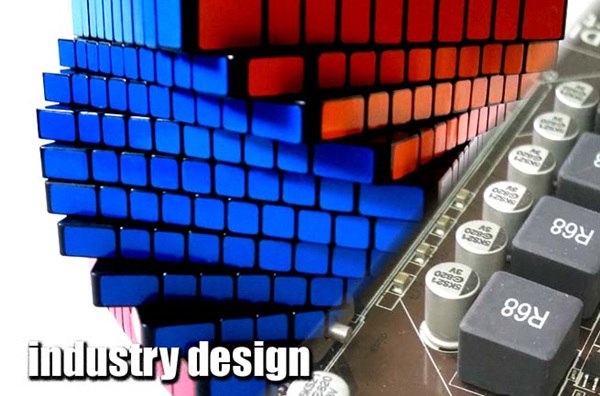Place Strategic Focus on the Development of the Industrial Design Sector
2018-09-17

By Wei Jigang & Li Yaokun, DRC
2018-7-25
As an innovative activity to integrate and improve the functions, structures, procedures, appearance and prototype of industrial products, industrial design stands at the core of the value chain in industrial economy. It is significant in generating product differentiation, promoting technology commercialization, adding values to products, and optimizing and remodeling the industrial system.
The development of China’s industrial design sector faces the following problems. First, the technological system and capability for industrial design are inadequate; an effective support to the research on independently designed prototypes and lifestyle models is not in place; and the number of flagship businesses and leading figures in the industry is limited. Second, the enterprises need to strengthen their awareness of industrial design application. 1. As a large number of domestic manufacturers has long developed a mindset of “introduction--digestion” and is inclined to rely on imitation and even copying others in the product design link, industrial design has failed to be really included into the cost mix of product development, with particular inadequacy of deep-seated R&D efforts in the product type development, prototype cultivation, user experience and manufacturing procedure improvement. That is also why the design link has become a hotbed for imitation and simple modification. 2. Under the functional consumption circumstances, the common product evaluation standards only consist of relatively limited technical indexes and the sales feedbacks, and corporate managers fail to recognize the key role played by design innovation in adding product values, and nurturing emerging consumption markets under the circumstances of service-and-experience oriented mode of consumption. Third, on one hand, the industrial design sector in China has a loose intellectual property protection system and impotent regulation and assessment methods, causing its failure to effectively curb the imitation and copying acts in design; on the other hand, the statistics system of industrial design is not mature, with unclearly delineated categorization for the statistics; and there is no standard vocational qualification certificate approval system, which has curbed the promotion of professionals. Besides, the level of payment compared with relevant industries is low, leading to serious brain drain. Fourth, the policy environment needs to be improved.
Policy options are therefore made as follows. In order to promote China’s development of industrial design, efforts need to be made in the following aspects. First, on the basis of drawing on the experience of such industrial design powers as the U.S., Japan and Germany, China needs to leverage the potential of its market and the advantages of its institutional arrangements, accelerate the establishment of the industrial system for industrial design and set up clear general objective and phased goals, in a bid to link up the development of industrial design with the systematic and integrated innovation strategy and build China into a strong manufacturing power. Second, the system for industrial design needs to be improved. The industrial design sector should be steered toward the “Internet Plus” model based on the strategy of building China into a strong manufacturer. Through a “design Plus” system with enhanced value based on high-end, intelligent and service-oriented manufacturing, we could fully tap the function of industrial design in unleashing and increasing values. Third, a sound environment conducive to the development of industrial design needs to be fleshed out. A supportive market environment needs to be created for industrial design innovation in manufacturing industry, especially in small-and-medium-sized manufacturers, with the focus placed on strengthening legal and institutional guarantee in terms of intellectual property right protection, industrial standard, business cooperation, qualifications, credit guarantee, financing and other links. Assorted market entities will have further clarified duties and code of conduct, be guided to generate a more dynamic, orderly and fairer competition mechanism, and be further motivated in independent R&D, as well as purchasing and applying industrial innovation. Fourth, the development cost of industrial design needs to be reduced on many fronts. 1. China needs to cultivate the cultural consumption and brand consumption markets and balance allocation of market factors, so as to lower the cost for industrial design innovation in step with the market performance. 2. Supportive national and regional industrial policies need to be adopted tailoring to local development features, so as to cut the cost in common technological R&D and industrial cultivation for industrial design. 3. By relying on the local industrial design associations and societies, a network for supply-demand match and service intermediary needs to be constructed to advance industrial design innovation, promote targeted long-term cooperation between various types of manufacturers and specialized industrial design companies, and improve the bidding regulations for state-owned enterprises to buy design services, so as to lower the cost of matching corporate design resources. 4. In order to lower the cost of corporate policy consultancy, corporate managers need to be encouraged to focus their attention on value design innovation and application and establish a modern managerial and technological system for industrial design, in a bid to thoroughly apply industrial design to the full life-cycle courses including concept development, product manufacturing, branding, consumption experience and cultural value cultivation.














